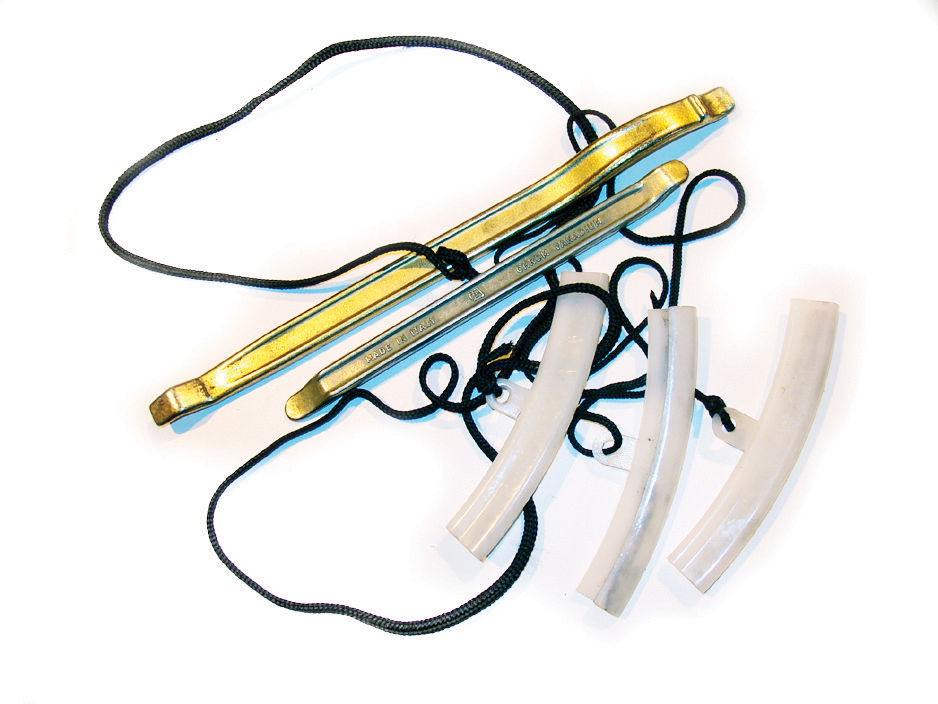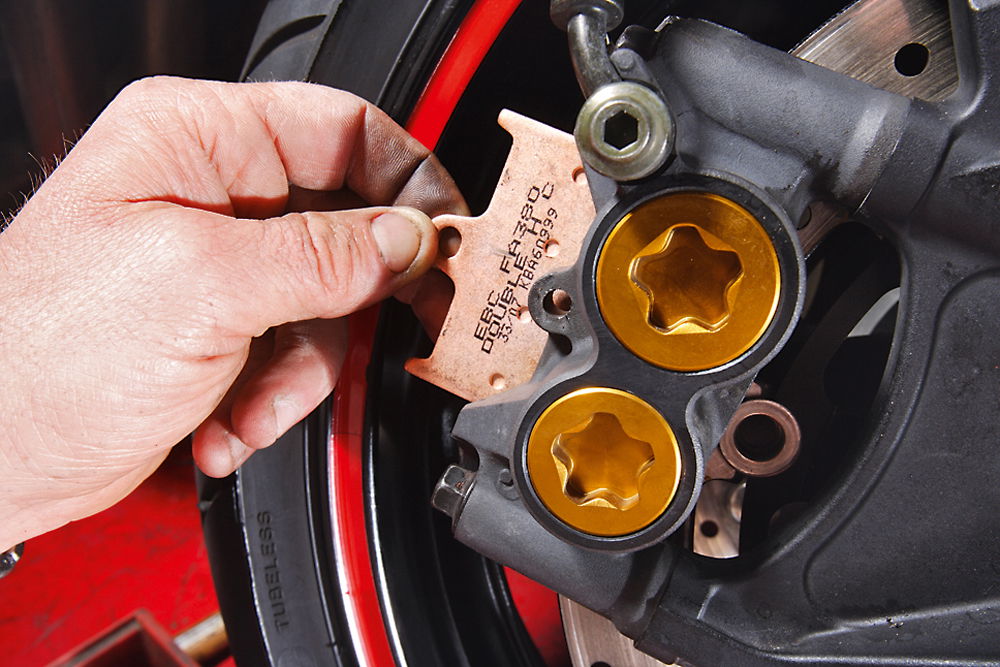Adjusting the sag on your bike
Whitham invites you in to his workshop for a lesson on how to adjust sag

���
Suspension changes as a bike ages, so it’s well worth checking your sag, especially if you’ve bought the bike second-hand as it may have once been owned by a track day looney or a 15 stone bloke carrying a 20 stone missus on the back.
It’s a simple adjustment to make and while you’re at it you’re likely to spot if there’s any wear in your headstock, wheel and swinging arm bearings. As suspension set-up goes, sorting the preload and setting the sag is the perfect place to start before fine-tuning any damping settings.
Step 1
First of all, we need to make sure the bike is settled on its suspension. If the bike has been on its side stand, sometimes the slightest bit of ‘stick-tion’ in the forks or shock will give a false reading. Whichever end you decide to start with, have a good old bounce and let the bike settle in the part of the suspension stroke where it will always naturally sit supporting its weight. This is the first step to setting the ‘static sag’.
Step 2
The next step is to fit a cable tie to the chrome part of the fork stanchion. On a USD fork this needs to be pushed tight against the dust seal. On a RWU fork the principle is exactly the same though the cable tie will be above rather then below the fork’s dust seal. Get a mate to lift the front of the bike until the suspension tops out or the front wheel leaves the floor. If you haven’t got any mates, a trolley jack will do the trick. This extension from loaded to unloaded is known as sag.
Step 3
The fork extending will have moved the plastic cable tie. Now all you need to do is to measure the distance between the tie and the dust seal. As you can see here, we have 25mm of front sag. The figure we really want is 28-32mm to help the front wheel to stay on the floor over bumps and undulations in the road. To adjust the amount of front sag we need to alter the amount of spring preload.
Don’t confuse this with ‘stiffening’ the suspension, we are merely altering how much the fork springs are pre-loaded with tension – the actual spring rate will remain constant. To increase the sag figure we take preload off (anti-clockwise) one turn at a time. Adding preload is the exact opposite and will reduce sag. Using a speed brace will make it much easier to count the number of turns. Always remember to remove the plastic cable tie after measuring, as it will damage the fork.
Step 4
Measuring the rear sag is just as straightforward. There will always be less sag at the rear – around 10-15mm is the average. As with the front end, have a good bounce on the back end of the bike to settle the rear shock.
Once it has settled, you need to find a point on the tail unit perpendicular to a point that’s ideally close to the wheel spindle.
A good tip here is to use a bit of gaffa tape with a pen mark on it on the tail unit. With the suspension settled take a measurement and write it down.
Step 5
Once again you’ll need a mate to give you a hand to lift the back wheel off the ground to fully extend the rear shock absorber. With the suspension fully topped out, measure between the same two points again. It’s important to take your time with this to ensure absolute accuracy, as it’s only a small measurement you’re taking. It’s worth taking this measurement a few times until you’re satisified that you’ve got it spot-on. Once you’re happy, subtract the first measurement you took from the last one – this will give you your rear sag figure. Now is a good time to have a cup of tea.
Step 6
Adjusting the preload on the rear shock to alter the sag can be tricky. If you’re lucky, you’ll have a hydraulic preload adjuster but the chances are you’ll have to alter it with a ‘C’ spanner. On the Yamaha it’s very easy to use the stepped adjuster that applies more or less pressure on the spring against the preload collar. Clockwise will decrease the preload, anti-clockwise will increase it.
So, if we wanted to increase the sag we’d want to turn it clockwise. Most bikes use two locking rings on a thread. Just to be confusing, these work in the opposite direction to the Yamaha, essentially tightening the spring tension on a thread. Therefore, clockwise increases preload, thus reducing sag.
Once you’ve made your adjustments, it’s worth having a final bounce on the bike and recheck of the measurements before going for a test run and marvelling at how much better your bike handles.
��
Sponsored By

Britain's No.1 Specialist Tools and Machinery Superstores
When it comes to buying tools and machinery, you need to know you're buying from specialists who know what they're talking about.
Machine Mart eat, sleep and breathe tools and machinery, and are constantly updating their range to give you the very best choice and value for money - all backed by expert advice from their friendly and knowledgeable staff. With superstores nationwide, a dedicated mail order department and a 24 hour website offering quality branded items at fiercely competitive prices, they should be your first choice for quality tools and equipment.

